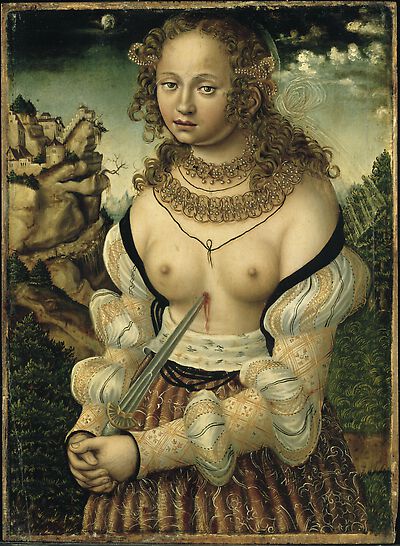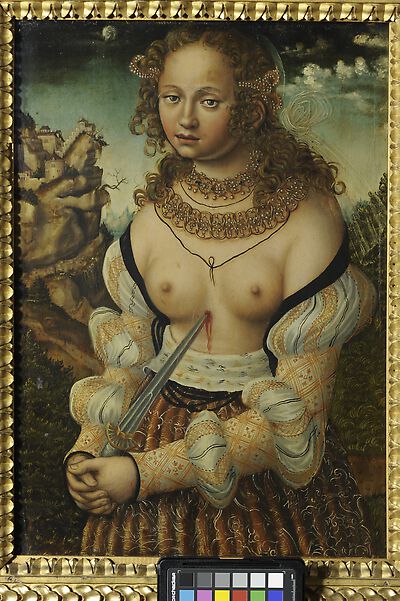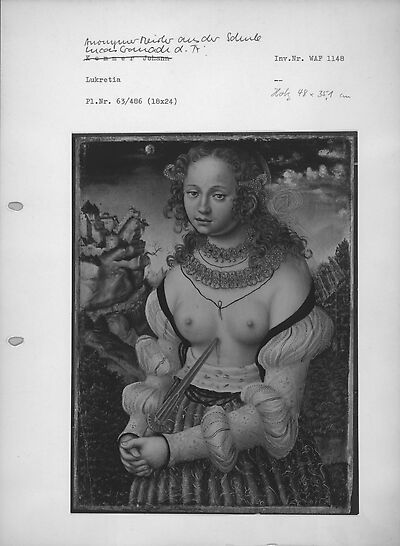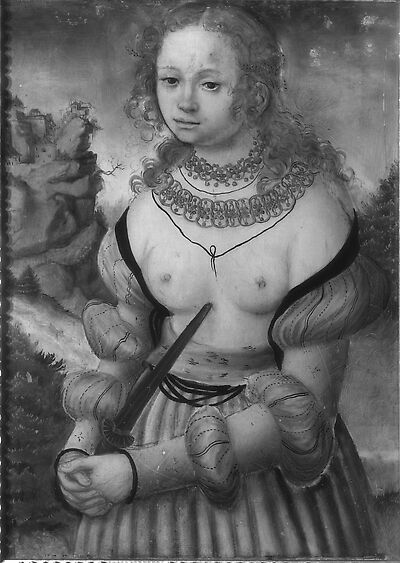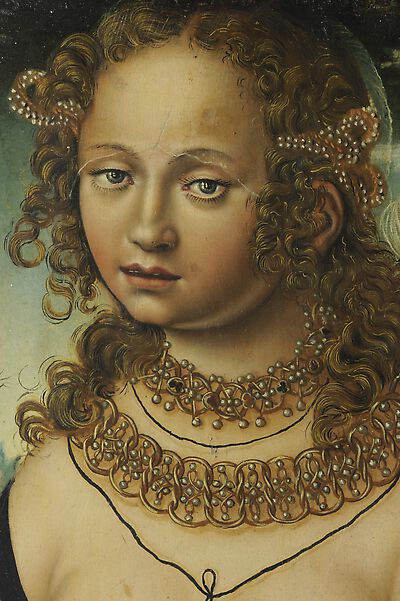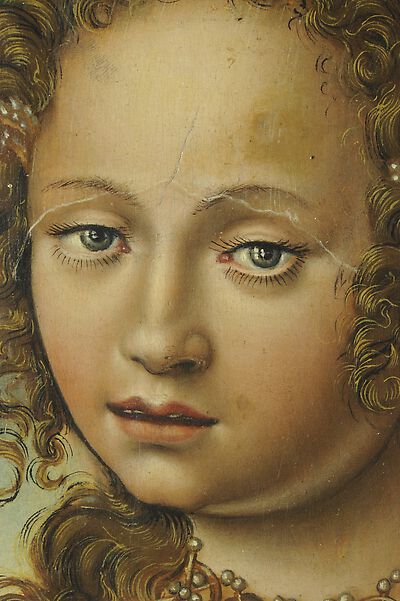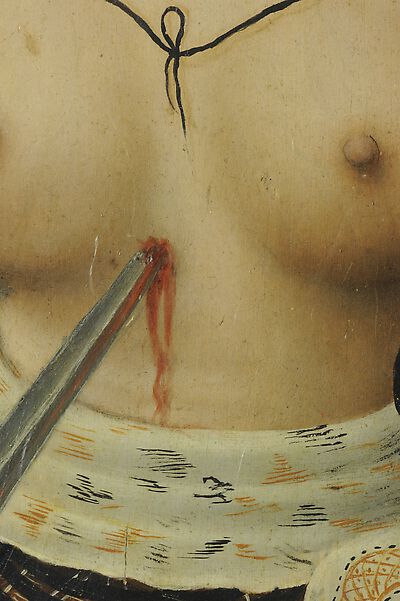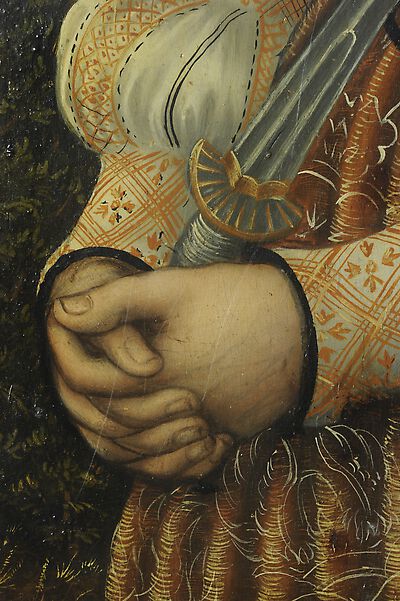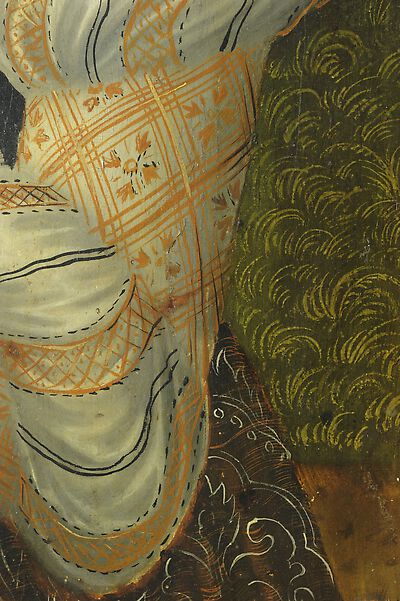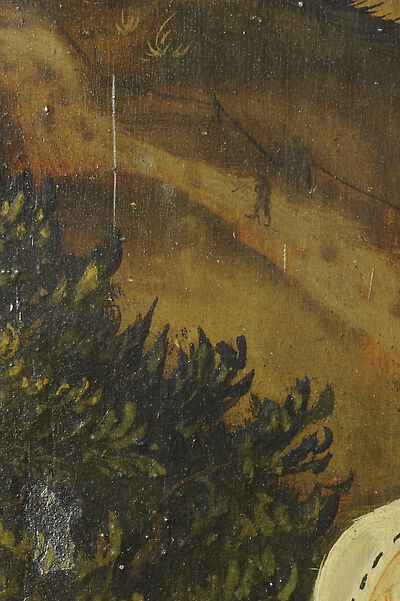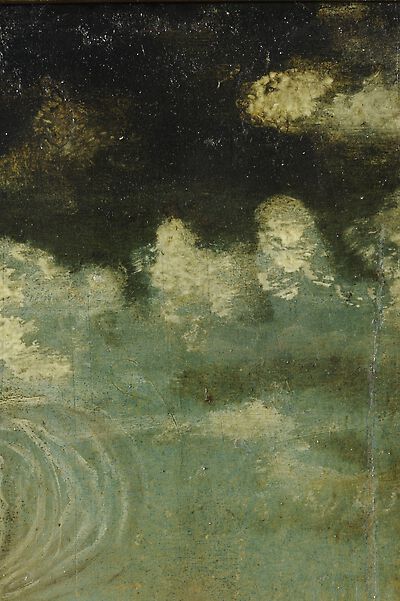The painting depicts Lucretia in contemporary dress standing in front of a landscape.
Her head is inclined slightly to the left and she stares into the far distance. Her hands are lowered and she holds the dagger with which she has already injured her breasts.
Lucretia wears a gold, contemporary dress
The painting depicts Lucretia in contemporary dress standing in front of a landscape.
Her head is inclined slightly to the left and she stares into the far distance. Her hands are lowered and she holds the dagger with which she has already injured her breasts.
Lucretia wears a gold, contemporary dress with white puffed sleeves, which has slipped off her shoulders to reveal her breasts. To complement the dress she wears a linked chain and a neck lace, both of which are richly decorated with pearls. Her curled hair is also decorated with pearls and covered with a veil. The simplicity of the long dagger is contrasted by the precious jewellery.
A mountainous landscape with a castle is visible in the background.
According to the legend Lucretia lived in the 6th century BC and was the beautiful and virtuous wife of the roman Collatinus. The roman King's son - Sextus Tarquinius fell in love with her. During a stay in her house Sextus threatened to kill her and shame her honour if she did not surrender to him. After the rape Lucretia had her father and husband vow vengeance and then she stabbed herself. The event led to an uprising in which the royal family was overthrown and the Roman Empire became a Republic.
Depictions of Lucretia who was seen as the epitomy of female virtue, chastity, fidelity and honour enjoyed great popularity, particularly in the 16th century.
[Literature: Bierende 2002, Follak 2002, Livius 1909]
- Attribution
- Anonymous Master from the Cranach Workshop
Attribution
| Anonymous Master from the Cranach Workshop | [Exhib. Cat. Munich 2011, 149, No. WAF1148] |
- Production date
- about 1520-1540
Production date
| about 1520-1540 | [Bayerische Staatsgemäldesammlungen, revised 2009] |
- Dimensions
- Dimensions of support: 48 x 35.1 cm
Dimensions
Dimensions of support: 48 x 35.1 cm
[Exhib. Cat. Aschaffenburg 2007, 321, No. 70]
[Exhib. Cat. Munich 2011, 149, No. WAF1148]
[Bayerische Staatsgemäldesammlungen, revised 2009]
- Owner
- Bayerische Staatsgemäldesammlungen
- Repository
- Staatsgalerie im Schloss Johannisburg, Aschaffenburg
- Location
- Aschaffenburg
- CDA ID
- DE_BStGS_WAF1148
- FR (1978) Nr.
- FR-none
- Persistent Link
- https://lucascranach.org/en/DE_BStGS_WAF1148/
